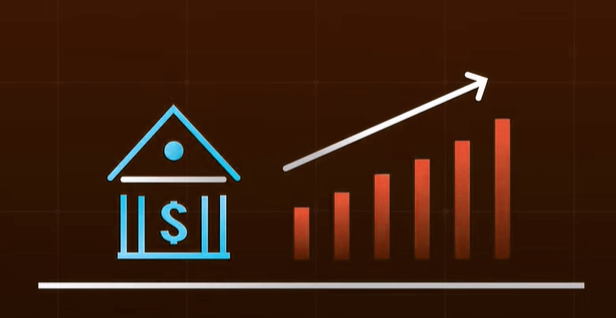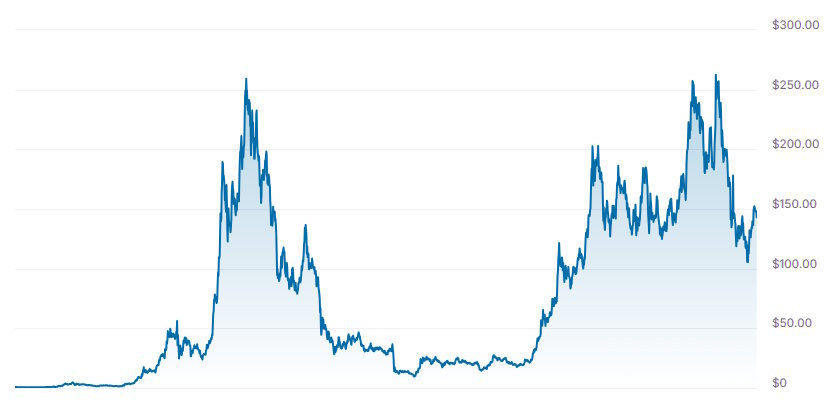Most people associate Solana with an increasing token value while observing its fast processing capabilities and active market of meme coins and NFT creations. Recent price increases to triple digits combined with intensifying investor interest make dismissing SOL as an asset with high volatility and increasing market momentum simple.
People who only consider Solana from a price perspective fail to recognize its essential features. Solana transcends its token identification as it represents a high-performance Layer 1 blockchain that applies an exclusive scale-up solution and developer experience protocol. The system stands valuable because its programming basis extends beyond market chart data.
The Solana ecosystem enjoys new confidence because its underlying technology has developed steadily in the background while market activity has resumed its growth.
The market performance of SOL is strong because its price remains stable at $132 throughout mid-April 2025, thus making it rank among the top-performing Layer 1 assets for this year. The Current Solana price has now found direct support through actual roadway development alongside increasing user numbers and the creation of a modern programming environment that attracts fresh developers.
A Developer-First Philosophy
Solana’s distinctive feature is its continuous commitment to speed, distinguishing it from other chains. This distinguishes Solana from Ethereum ♦ because instead of Layer 2 scaling solutions, Solana implements high-speed, low-cost operations on Layer 1. The runtime uses Rust programming as its backbone because Solana wants to prove its commitment to operational security combined with rapid execution and profound system control.
Rust isn’t an easy programming language. Any development work requires disciplined memory management, rigorous attention to detail, and internal discipline. Using Rust grants developers opportunities for fast execution and automatically reduced runtime errors. Creating necessary DeFi protocols, oracles, and NFT marketplaces requires these implementations to matter. New developers find it simpler to join Solana development each day because their tooling continues to improve.
| Feature | Details |
|---|---|
| Consensus Mechanism | Proof of History (PoH) with fast Layer 1 validation |
| Programming Language | Rust (with Anchor framework for simplification) |
| Transaction Speed | Thousands per second |
| Use Cases | DeFi, NFTs, gaming, social platforms |
| Developer Tools | Anchor, streamlined Web3/Web2 hybrid experience |
| Resilience Enhancements | Firedancer and other C-based infrastructure upgrades |
The development framework Anchor enables Rust developers to simplify their smart contracts on Solana through a user-friendly syntax that reduces boilerplate while organizing program structures. The development platform Anchor serves Solana like Hardhat does for Ethereum by empowering teams to shift their applications from ideas to production.
The vital transformation is making Solana an environment welcoming to developers instead of restricted to traders alone. Developer activities tend to attract value as they establish a new presence in a market.
Code That Enables Speed and Scale
A fundamental breakthrough of Solana is its design framework. Solana avoids the conventional consensus model by implementing Proof of History (PoH) to time stamp deals, thus enabling simultaneous transaction processing. The system permits block validation at accelerated speeds, keeping costs low while delivering functions at minimal latency and high performance.

This design represents more than simply cleverness. It marks a key step toward creating blockchain systems that can effectively serve real-world operations on a larger scale. Solana processes thousands of on-chain transactions every second through its technical architecture, which does not require additional L2 ecosystems or high gas fee costs.
The advanced technology behind Solana provides perfect conditions for developing decentralized exchanges, gaming apps, and social media platforms that require quick processing times.
The streamlined environment on Solana combines Web2 functionality with decentralized Web3 operations through an interface that resembles traditional Internet environments. At the same time, Solana maintains exceptional performance capabilities.

Developer experimentation takes a backseat as they develop applications, including Jito, Tensor, MarginFi, and Phantom, for production use. Competent developers create applications with commercial adoption potential through their work.
Code, Not Hype Power Solana’s Comeback
The years 2022 through 2023 brought criticism toward Solana regarding its network reliability. Major system faults with congestion and downtime gave the public serious doubts about whether it could operate as a profitable Layer 1 network. Firedancer and other vital infrastructure improvements have led to remarkable increases in network performance while enhancing resilience following the previous network issues.

The development was executed without showy promotional strategies or celebrity testimonies. It was engineering. Developer success in achieving progress through hands-on C programming development resulted in enhancements that brought redundancy, performance, and security features to the protocol. Such unreported operational tasks create enduring growth and institutional trust despite not generating media attention.
Beyond the Charts: Why Code Drives Value
Numerous analysts point to the network’s strengthened architectural base as the main factor behind its current price surge instead of speculations and market fluctuations. The ability to attract more developers and users of active addresses combined with rising TVL shows a strong base for the chain to move forward.
The fundamental importance of code base gives blockchain networks their intrinsic value.
A blockchain gains value based on its ability to deliver practical programs to its ecosystem. Long-term stability in blockchain ecosystems results from developer communities, infrastructure scalability, and practical applications that users genuinely need.
Solana demonstrates its ability to provide its users with the complete set. The system matches centralized systems when it comes to speed and cost-effectiveness. Speed and usability find a perfect balance within its developed programming structure designed for professional users. Solana’s reputation continues to grow in terms of reliability and innovation standards, which are fundamental to these fields where credibility matters most.

Solana derives its significant worth from factors beyond mere hype and increased token activity levels. The fundamental values of speed and large-scale operation exist within its fundamental code structures and architectural elements and developer community.
Building at the Speed of Solana
As we advance, the crypto world demands projects focusing on developer experience and real utility while successfully passing regulatory requirements to gain worldwide adoption. Solana has selected itself as one of the upcoming prominent crypto projects.
🔑 Key Points Summary
-
Solana is often misunderstood as just a token, but its real strength lies in its code and development environment.
-
It is a high-performance Layer 1 blockchain that prioritizes speed, scalability, and developer experience.
-
Solana uses Proof of History (PoH), enabling fast transaction processing and low fees without Layer 2 solutions.
-
The Rust-based programming model, along with tools like Anchor, supports robust and efficient smart contract development.
-
Solana has recovered from past reliability issues through deep technical upgrades like Firedancer.
-
It supports real-world decentralized applications including exchanges, games, and social platforms.
-
The blockchain’s value is increasingly tied to its architecture, developer ecosystem, and real utility—not just market hype.
The current market buoyancy is exciting to watch, but the actual tale is found within the project’s core elements, such as the consensus mechanism alongside the runtime and development tools. The market focuses on charts, yet developers send out their software code. These efforts build future developments.

